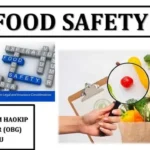In the food industry, legal and regulatory compliance is crucial to effective risk management and mitigating potential liabilities. With stringent regulations governing food safety, labeling, production, and distribution, businesses must navigate a complex landscape to ensure they meet all legal requirements. Non-compliance can lead to significant financial repercussions, including insurance claims, penalties, and reputational damage. This article explores how legal and regulatory compliance integrates into risk management strategies within food insurance, highlighting key regulations, compliance strategies, and best practices.
1. Importance of Legal and Regulatory Compliance
1.1 Protecting Public Health
Legal and regulatory compliance helps safeguard public health by ensuring that food products are safe for consumption. Regulations such as the Food Safety Modernization Act (FSMA) in the U.S. and the European Food Safety Authority (EFSA) standards in Europe mandate rigorous food safety practices, helping to prevent contamination and foodborne illnesses.
1.2 Avoiding Legal Liabilities
Adherence to legal standards reduces the risk of legal liabilities and lawsuits. Non-compliance with food safety laws can result in costly legal actions, fines, and settlements. Compliance helps businesses avoid these risks by ensuring that all operations adhere to established legal requirements.
1.3 Ensuring Insurance Coverage
Insurance policies often have clauses that require businesses to comply with specific regulations and standards. Non-compliance can result in denial of coverage or reduced claims payouts. By maintaining compliance, businesses ensure that their insurance policies provide adequate protection.
1.4 Enhancing Business Reputation
A strong commitment to regulatory compliance enhances a business’s reputation, building trust with consumers, regulators, and stakeholders. Positive reputation can lead to increased customer loyalty and potential market advantages.
2. Key Regulations and Standards
2.1 Food Safety Modernization Act (FSMA)
2.1.1 Overview
The FSMA, implemented by the U.S. Food and Drug Administration (FDA), focuses on preventing food safety issues rather than responding to them after they occur. Key provisions include:
- Preventive Controls: Requires food facilities to establish preventive controls to address hazards.
- Risk-Based Inspections: Prioritizes inspections based on risk to ensure higher-risk facilities receive more scrutiny.
- Traceability: Mandates tracking and tracing of food products to quickly address recalls and contamination issues.
2.1.2 Impact on Risk Management
Compliance with FSMA helps businesses prevent food safety issues, reducing the risk of contamination and associated insurance claims. Implementing preventive controls and effective traceability systems supports risk management by addressing potential hazards before they impact consumers.
2.2 European Food Safety Authority (EFSA) Regulations
2.2.1 Overview
The EFSA oversees food safety in the European Union, setting standards and providing scientific advice. Key regulations include:
- General Food Law Regulation: Establishes principles for food safety and traceability.
- Regulation (EC) No 178/2002: Sets requirements for food safety and labeling.
- Food Information to Consumers (FIC) Regulation: Mandates accurate labeling and allergen information.
2.2.2 Impact on Risk Management
Adhering to EFSA regulations ensures that food products meet safety and labeling standards in the EU market. Compliance reduces the risk of legal challenges and insurance claims related to food safety and labeling issues.
2.3 Hazard Analysis and Critical Control Points (HACCP)
2.3.1 Overview
HACCP is an internationally recognized system for managing food safety. It involves identifying and controlling hazards at critical points in the food production process. Key principles include:
- Hazard Analysis: Identifying potential hazards and risks.
- Critical Control Points (CCPs): Establishing points where controls are essential.
- Monitoring and Verification: Implementing procedures for monitoring and verifying control measures.
2.3.2 Impact on Risk Management
HACCP compliance helps businesses proactively manage food safety risks, reducing the likelihood of contamination and insurance claims. The systematic approach to hazard control supports risk management by addressing potential issues before they arise.
2.4 Allergen Labeling Regulations
2.4.1 Overview
Regulations on allergen labeling require businesses to disclose allergenic ingredients in food products. Key regulations include:
- Food Allergen Labeling and Consumer Protection Act (FALCPA): Requires clear labeling of major allergens in the U.S.
- EU Regulation (EU) No 1169/2011: Mandates allergen information on food labels in the EU.
2.4.2 Impact on Risk Management
Accurate allergen labeling reduces the risk of allergic reactions and associated insurance claims. Compliance with labeling regulations helps prevent legal liabilities and supports consumer safety.
3. Compliance Strategies
3.1 Implementing Food Safety Management Systems
3.1.1 Overview
Food safety management systems (FSMS) provide a structured approach to managing food safety and regulatory compliance. Key components include:
- Documentation: Maintaining detailed records of food safety practices and compliance.
- Procedures and Protocols: Establishing procedures for food handling, storage, and production.
- Training: Providing training for staff on food safety and regulatory requirements.
3.1.2 Impact on Risk Management
Implementing an FSMS ensures that businesses adhere to regulatory requirements and maintain high food safety standards. Effective FSMS supports risk management by providing a systematic approach to compliance and hazard control.
3.2 Regular Audits and Inspections
3.2.1 Overview
Regular audits and inspections help businesses identify compliance gaps and address potential issues. Key practices include:
- Internal Audits: Conducting regular internal audits to review compliance with food safety protocols and regulations.
- Third-Party Inspections: Engaging third-party auditors to provide an external assessment of compliance.
3.2.2 Impact on Risk Management
Regular audits and inspections help businesses maintain compliance with regulations and identify areas for improvement. Proactive auditing supports risk management by addressing potential compliance issues before they result in claims or penalties.
3.3 Developing and Implementing Corrective Actions
3.3.1 Overview
Developing and implementing corrective actions address non-compliance issues and prevent recurrence. Key steps include:
- Identifying Issues: Identifying the root causes of non-compliance or safety issues.
- Developing Actions: Developing and implementing corrective actions to address identified issues.
- Monitoring Effectiveness: Monitoring the effectiveness of corrective actions and making necessary adjustments.
3.3.2 Impact on Risk Management
Effective corrective actions help businesses resolve compliance issues and prevent future occurrences. Addressing non-compliance promptly reduces the risk of legal liabilities and insurance claims.
3.4 Staying Informed of Regulatory Changes
3.4.1 Overview
Staying informed about regulatory changes is essential for maintaining compliance. Key practices include:
- Monitoring Regulations: Keeping up-to-date with changes in food safety and labeling regulations.
- Engaging with Industry Associations: Participating in industry associations and forums to stay informed about regulatory developments.
3.4.2 Impact on Risk Management
Staying informed of regulatory changes helps businesses adapt to new requirements and maintain compliance. Proactive management of regulatory changes supports risk management by ensuring that businesses are prepared for evolving regulatory landscapes.
4. Best Practices for Legal and Regulatory Compliance
4.1 Developing a Compliance Culture
- Leadership Commitment: Ensure that senior management demonstrates a commitment to regulatory compliance and food safety.
- Employee Engagement: Foster a culture of compliance among employees through training and communication.
4.2 Implementing Robust Documentation Systems
- Record Keeping: Maintain comprehensive records of compliance activities, including training, audits, and corrective actions.
- Documentation Management: Implement systems for organizing and accessing compliance-related documents.
4.3 Leveraging Technology and Tools
- Compliance Software: Utilize software tools to manage compliance documentation, track regulatory changes, and streamline reporting.
- Automation: Implement automated systems for monitoring and managing compliance activities.
4.4 Engaging with Legal and Compliance Experts
- Consultation: Consult with legal and compliance experts to ensure that regulatory requirements are met and to address complex compliance issues.
- Training: Provide ongoing training for staff on legal and regulatory compliance.
5. Conclusion
Legal and regulatory compliance is a cornerstone of effective risk management in food insurance. By adhering to food safety regulations, businesses can protect public health, avoid legal liabilities, and ensure adequate insurance coverage. Key regulations, such as FSMA, EFSA standards, and allergen labeling requirements, play a critical role in managing food safety risks. Implementing compliance strategies, such as FSMS, regular audits, and corrective actions, helps businesses maintain high food safety standards and mitigate risks. Staying informed of regulatory changes and engaging with legal and compliance experts further supports effective risk management. Overall, a strong commitment to legal and regulatory compliance enhances business operations, safeguards public health, and contributes to successful risk management within the food industry.



